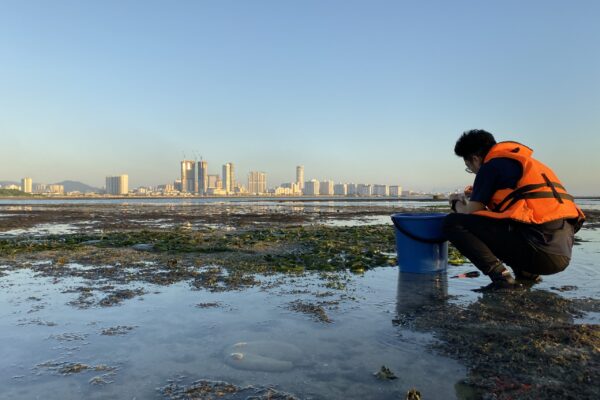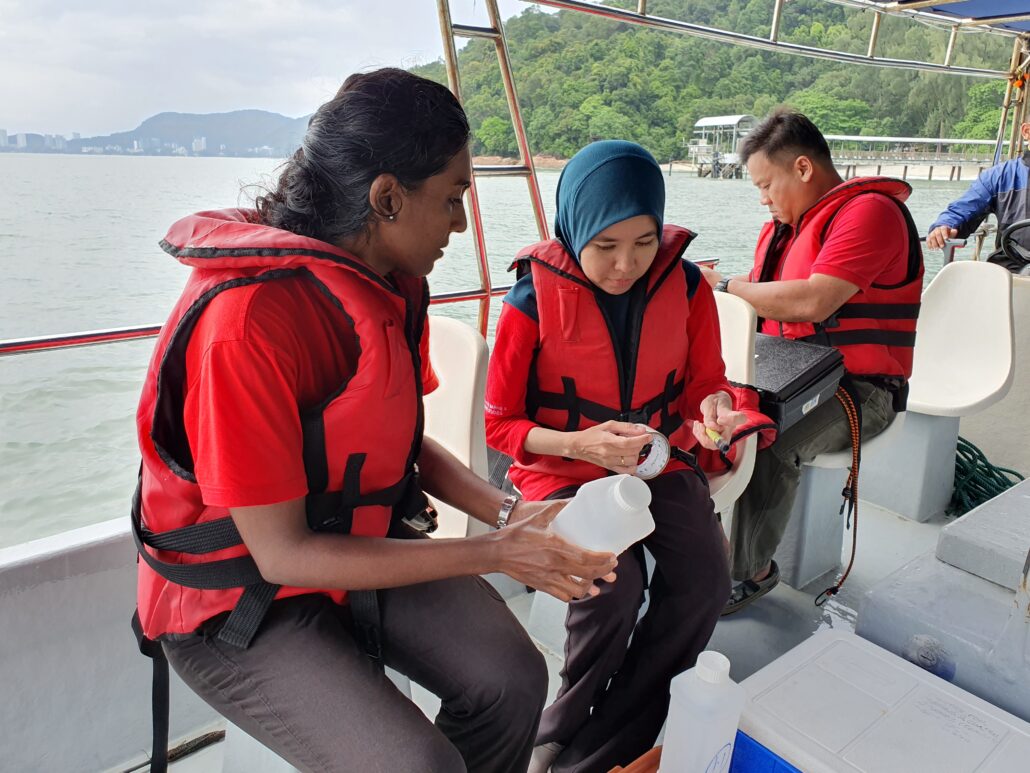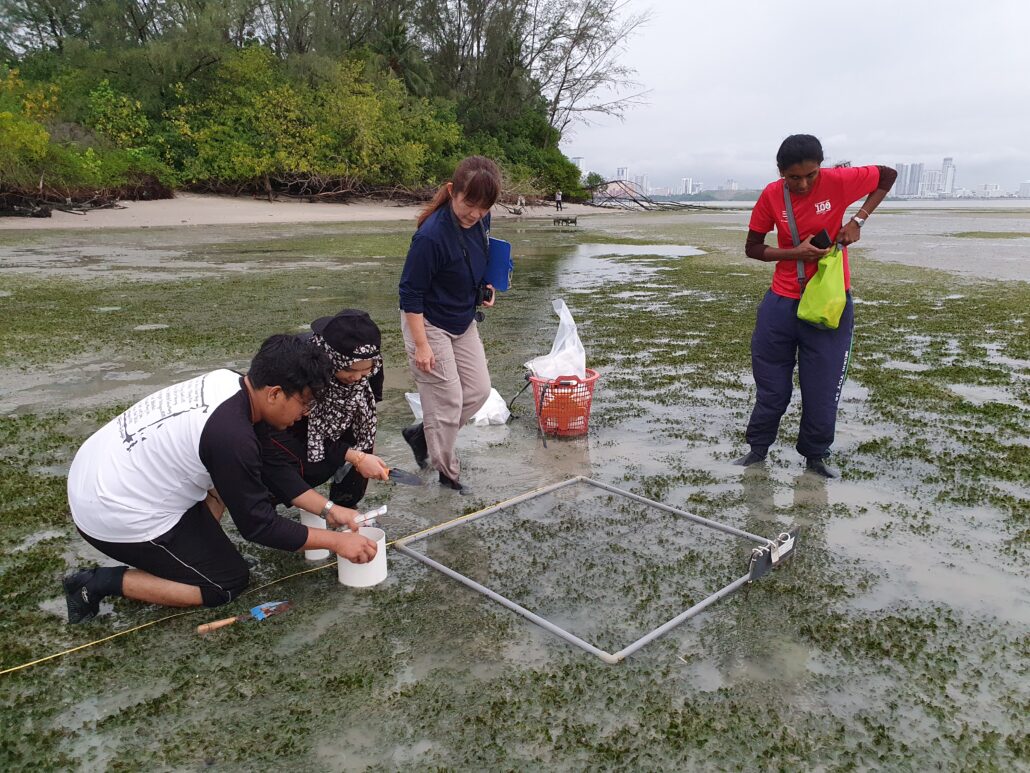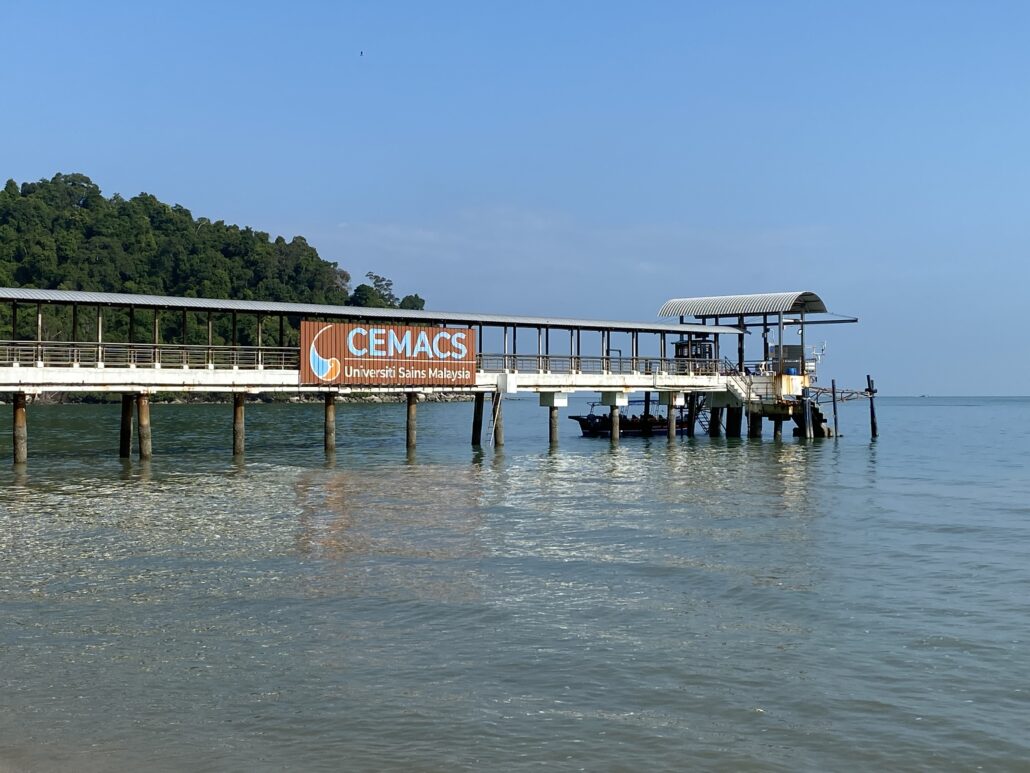RESEARCHERS IN MALAYSIA ARE USING OCEAN OBSERVATIONS TO QUICKLY IDENTIFY POLLUTION AROUND THE COAST OF THE ISLAND AND STUDY ITS POTENTIAL IMPLICATIONS.

Penang National Park, Malaysia, has the feel of a place lost in the mists of time. Beach-fringed forests give sanctuary to silver leaf monkeys, flying lemurs and multitudes of amphibians, reptiles, and birds. In recent decades, however, tourism and manufacturing elsewhere on Penang island has boomed, the effects of which are threatening the health of marine life and the livelihoods of those reliant on its seas.
In April 2019, small-scale aquaculture farmers in Teluk Bahang – a peaceful fishing village located on the edge of the park – awoke to the horrific sight of thousands of dead groupers, barracudas, and golden and red snappers floating on the water’s surface.
Around 50,000 fish died as result of a sudden deterioration of water quality. The mass death, which was widely reported in the region’s media, left communities stunned and authorities baffled.
GROWING POLLUTION THREATS
It sparked an investigation by marine experts from the Centre of Marine and Coastal Studies (CEMACS), who operate a series of coastal stations to monitor water quality around the island. “This was a very unusual event, and was deeply concerning,” says Nithiyaa Nilamani, a research officer at CEMACS, which is part of the Universiti Sains Malaysia. “We immediately organised the collection of water samples from the area to try to understand what was happening.”
As anyone familiar with Penang Island will tell you, development on the island has coincided with sharp spikes in water pollution along many parts of its coastline. Effluent from factories, spills from ships, illegal dumping, sewage, and debris whipped up by winds cause substantial damage to aquatic habitats such as corals and seagrass. Experts believe they also pose an existential threat to entire coastal ecosystems and the livelihoods of communities dependent on them.
Analyses of the waters around Teluk Bahang revealed unusually high levels of heavy metals such as nickel, lead, and cadmium. The source of pollution remains the focus of a long-term investigation: some experts suspect illegal dumping or dredging activities could be to blame. But near real-time observations are also providing vital data for the development of an early warning system for future marine hazards. The work is underpinned by ocean observations spanning four decades.
“Our marine research stations enable us to quickly identify pollution around the coast of the island and study its potential implications,” Nilamani says.
“When things don’t look right in the ecosystem, we can go to these areas, sample more intensively, and then predict where else might be affected in the coming days and weeks.”
BUILDING UP LONG-TERM DATA
CEMACS operates the longest-running marine monitoring station in South East Asia, with records covering more than four decades. Teams carry out regular analyses of seawater, from surface layers to the seabed, to study communities of tiny algae known as phytoplankton in the waters. The make up of phytoplankton at any given time can provide indications of water quality as they form the base of the ocean food web, as well as playing an essential role in oxygen production and the carbon cycle.
Researchers also measure other factors that can affect or be affected by water quality, such as temperature, dissolved oxygen, salinity, pH, and levels of nutrients such as ammonia, phosphates, and nitrates. They also take continuous weather recordings such as wind speed, atmospheric pressure, humidity, and rainfall.
These data can help scientists both identify where the pollution is and predict where it is headed. Armed with this information, they can support local communities and businesses to prepare for when sudden deteriorations in water quality strike. “We’re dealing with a whole host of different threats, such as pollution, infrastructure projects, and unsustainable agricultural practices,” Nilamani says.
“High nutrient runoff from farms, for instance, leads to imbalances in the waters and can throw ecosystems off kilter by sparking the growth of vast blooms of phytoplankton. While micro-algae form an essential part of the ocean ecosystem, excessive algal blooms can be toxic to fish and shellfish or deprive waters of oxygen. This can lead to significant losses for a wide range of people reliant on the waters for social, cultural, and economic purposes.”
By spotting harmful micro-algal blooms as they develop, CEMACS is able to provide alerts that can prepare communities for the worst. “The dynamics of phytoplankton blooms are notoriously difficult to predict, but we want to make the best predictions that we can,” says Nilamani. “Thanks to our observations, we are able to alert communities around the island that algal blooms are happening and could be headed their way via water currents. Farmers, for instance, are then able to take certain measures, whether it is harvesting aquaculture early, or physically moving farms elsewhere.
Ultimately, the team wants to build a more comprehensive framework for ocean observations. “This could involve creating an online system where data is uploaded in near real time to allow people to be more quickly informed,” Nilamani says. “The warning system would help us meet the goals of reaching the farmers more quickly and reduce the damages that can occur from various sources of pollution.”
CONTRIBUTING TO THE BIGGER PICTURE
While the team is largely focused on Penang Island’s coastal environment, Nilamani’s colleague Abe Woo says their work is also contributing to global understanding of the ocean. “The problems and challenges we face here on this wonderful island – pollution, threats to seagrass habitats, and losses on marine farms – can be experienced in the waters around any developing country,” says Woo, a lecturer and group leader at CEMACS.
“Countries across South East Asia rely on the ocean for food security, culture, and social activities. Humans are land animals and in the past we have tended to underestimate the impacts that our actions have on the oceans: and even with threats such as climate change, biodiversity loss, and rising sea levels, the focus tends to be on the land. But we ignore the ocean at our peril.”
Consequently, much of the research at CEMACS is geared towards sustainability. The institute, which employs around 30 scientists, places strong emphasis on green marine farming, biodiversity, and the conservation of marine ecosystems. “Mariculture such as oysters feed on natural algae and plankton and is significantly less energy intensive than shrimp farming, for instance,” Woo says.
“There are a lot of practices that are old fashioned, environmentally damaging, and could be changed to support this goal. We aim to help our communities adapt and support them in achieving these sustainable objectives. We also want to get people talking about the importance of the ocean and its vital role in our collective futures.”
Here, he points to the importance of initiatives such as the UN Decade of Ocean Science for Sustainable Development (2021-30) in focusing international minds on the seas. “With the challenges ahead it can often seem a bleak time for the future of the ocean,” says Woo. “But this cannot be our mindset. Achieving real, lasting, and sustainable change is possible. For instance, young people are much more aware of the importance of the ocean than previous generations: this represents our best hope and best chance.
“We now have a tremendous ability to observe what is happening beneath the surface. In this sense, it is a wonderful time to be a marine scientist. But the more we delay our actions, the more difficult it will be to achieve sustainable use of the ocean. We need to act now.”



- Created on .
- Hits: 1020
